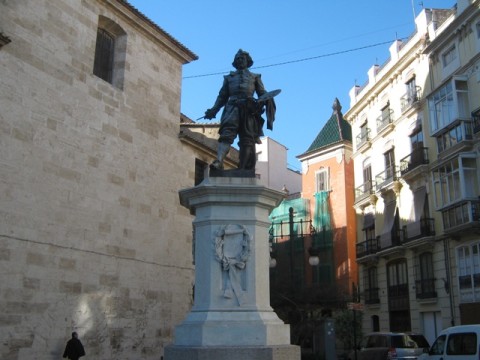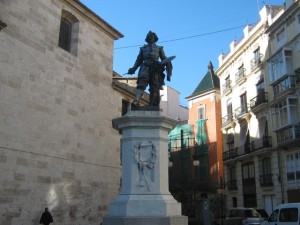In June 2020 the Parisian auction house Daguerre sold a painting by Valencian artist José Ribera, ‘Un filósofo: el feliz geómetra’ for 1.8 to a Swedish art gallery.
A walk along the banks of where the River Turia used to flow through Valencia always affords impressive views and a variety of statues and monuments from which we can learn a little about our past.
One such statue is that of José Ribera, the Valencian artist who was born at Xátiva in 1591.
So great was his desire to paint that, after studying art in Valencia, he ran away from home with his brother Juan, and established himself in Italy, where he was adopted by a Cardinal who came across him copying a fresco one day.
The Romans nicknamed him Lo Spagnoletto, or ‘the Little Spaniard’ and he was also known by the names Jusepe (de) Ribera or Giuseppe Ribera.
Eternally restless, he gave up his safe haven in the Cardinal’s house and travelled to Parma and later Naples, where he married Catalina, the daughter of a wealthy art dealer.
His father-in-law promoted his work by hanging one of his paintings, the ‘Martyrdom of St Bartholomew,’ from his balcony, where it drew the attention of the Spanish Viceroy, the Count de Monterey, who in turn recommended Ribera to the Spanish King, Phillip IV.
In his early years, Ribera was a follower of Caravaggio, whose style was an exploration of the contrasts of shade and light.
He spent the rest of his life in Italy where he was recognised as one of the finest painters of his epoch and where in 1629 he met Velazquez, who was touring Italy at the time.
His final years were not so happy, particularly when there was a popular revolt against the Spanish occupation of Naples, which was put down by Don Juan de Austria in February 1648. Legend has it that Don Juan seduced one of the painter’s daughters and conceived a child with her. Don Juan de Austria is of course also the name of the pedestrian street that separates two of the Cortes Inglés department stores in central Valencia. Ribera’s statue faces away from it, perhaps significantly.
After a life of relative luxury Ribera died poor in Naples in 1652, often reduced to borrowing money from his clients.
Today, twenty-five of his paintings, which mostly deal with religious themes, hang in Le Louvre and another two in London’s National Gallery. One of his self-portraits forms part of the Alton Towers collection. Alton Towers other claim to fame is of course that of holding a world record for the greatest number of naked people on a roller coaster. The circle comes around.


